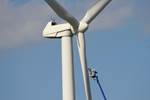Swinburne, Sparc Technologies researchers to create graphene-enabled smart composites
Connected smart structures are being built that can be wirelessly monitored in real time for hard-to-detect defects, enabling safer, more reliable and cheaper air and space travel.
New industry-linked research between Swinburne University of Technology (Melbourne, Australia), Sparc Technologies (Kent Town, South Australia) and Composite Materials Engineering is creating a new generation of smart composites that could help engineers detect structural defects in planes and rockets before they happen, while also reducing costs in the energy, transport and aerospace sectors.
Realized through university and industry collaboration, the ARC Linkage-funded project aims to use graphene-based nanomaterials to create a working prototype of a smart carbon fiber structure with wireless connectivity that can be remotely monitored for difficult-to-identify defects in real time. This includes enabling technicians to monitor wind turbine blades in remote mountain or coastal locations and detecting faults in airplane and rocket parts before they fail.
Deputy vice-chancellor research, Professor Karen Hapgood, says the project used Swinburne’s capabilities and expertise in space, aerospace and advanced manufacturing to make a real-world impact. “Smart composites, such as those being created by this project, represent the connected future of our cities, our structures and our networks,” Hapgood says.
Lead investigator and associate professor Nishar Hameed adds that the project will have important implications for safety, reliability and cost in space, aerospace and renewable energy. “This technology could help address the cost — human, economic, environmental — of catastrophic disasters like airplane crashes, while delivering benefits across a range of industries.”
Related Content
-
TU Munich develops cuboidal conformable tanks using carbon fiber composites for increased hydrogen storage
Flat tank enabling standard platform for BEV and FCEV uses thermoplastic and thermoset composites, overwrapped skeleton design in pursuit of 25% more H2 storage.
-
The lessons behind OceanGate
Carbon fiber composites faced much criticism in the wake of the OceanGate submersible accident. CW’s publisher Jeff Sloan explains that it’s not that simple.
-
3D-printed CFRP tools for serial production of composite landing flaps
GKN Aerospace Munich and CEAD develop printed tooling with short and continuous fiber that reduces cost and increases sustainability for composites production.














